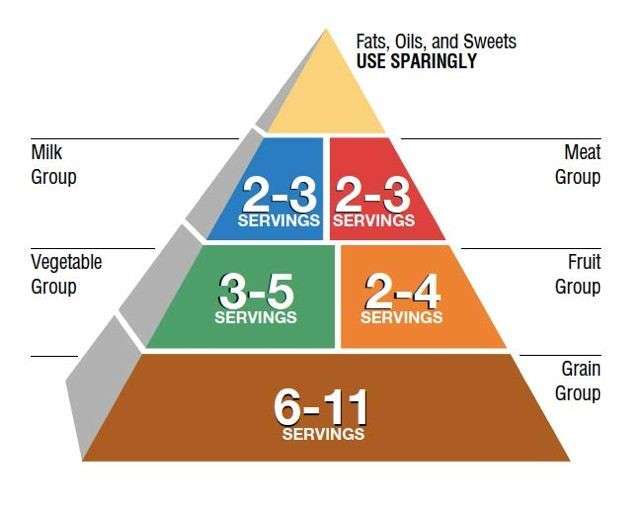
by Adam L Stanley | Feb 21, 2017 | Leadership, Life, Relationships
“Too often, companies fail to cultivate relationships with key decision-makers until a crisis hits, at which point it’s too late. Know the cell phone numbers of such people so that you can call them on Sunday night in real time, not after the fact on Monday morning.”
— Jaap de Hoop Scheffer, Former Secretary-General, NATO
Make friends before you need them
I guess this is the easiest way I can say this: you either want a life connection or you don’t.
I wouldn’t say that I’m a “networker” per se, although some people observing me might think I am. Rather, I like to forge long-term connections with people around shared interests — and only some of the time is that standard business. Much more of the time, it’s food, wine, theater, technology, or other passions. Hopefully, you have read my blog on this topic: Aim for life connections instead of networking.

The thing that bothers me in any discussion about relationship-building or standard networking is that often, the lesson seems to be that you connect with people when you need them. I disagree. I don’t want to be called when you need me if you had no interest before that. You either want the life connection or you don’t. It’s not contextual to “I need something now.”
The executive recruiter who placed me in my current role is the same recruiter who placed me in my role at Aon several years ago. He periodically checked in on me and had set a recurring event on his calendar marking the anniversary of my Aon start date. Just over three years ago, he reached out to me on this anniversary and we arranged a breakfast. That breakfast led to the introduction to, and unlikely connection with, my current company. It came as a result of a life connection – a relationship – not because I was looking for a role.
I have other recruiters in my “network” who call and email aggressively when they are trying to fill a role, yet never reach out in between. And how many emails do I get from people who worked for me years ago saying something like “Hi, I know it has been years since we have spoken but I am now looking for a job. Can you help?”
Or how about those family members or friends who don’t reach out to you for years, then one day, ask for money or favors? It happens far too often. Thus, my rant.
Make friends before you need them.
People want to feel needed and loved all the time, and not simply when you want their help or need something. And by “people,” I would definitely include myself.
But how do you do this? Here are a few tips.
Always use social media cheats.
Facebook and LinkedIn remind you of special occasions and make it very easy to say happy birthday or congrats to peeps in your circle. Use them. This is a great, quick way to say hello and it keeps your name fresh in their minds.  Use the “you might know” feature too. Every social platform has a variation of this. It turns out that your high school football teammate married someone who works at a company you admire. Reach out immediately. Don’t wait until you decide to pursue a job at that company. By that point, it’s too late.
Use the “you might know” feature too. Every social platform has a variation of this. It turns out that your high school football teammate married someone who works at a company you admire. Reach out immediately. Don’t wait until you decide to pursue a job at that company. By that point, it’s too late.
Buy stamps and custom note cards and use them.
I bought each of my nieces and my nephew 36 thank you notes and urged them to use them throughout the year. That is less than one personal note each week but likely about 34 more than they sent last year. Email is easy and crowded. Online billing and electronic advertising have resulted in snail mail being predominantly political crap and charities. Take advantage of the gap and send a personal card. The average white collar professional gets 120+ emails per day; often it feels like more than that. Email gets lost. A card will not and will ultimately mean more than a few email lines or something on Facebook.

Pick up the phone instead of flipping your middle finger.
Commuting is not fun. More than half of Americans spend at least 40 minutes in their round-trip commute. Nobel laureate Daniel Kahneman and his team found that people find as much happiness in commuting as they do in housework. That pretty much means that the commute stinks.
Do you have to drive everyday and often get stuck in traffic? Use that time for calls NOT related to work. Talking work AND dealing with stress, unless you REALLY like your job, will increase likelihood of road rage. Call someone funny that you haven’t heard from in years. Call the woman you heard started an amazing company this year. Call your allegedly best friend you have likely only touched via texts for at least a week. If you are on a train for your commute, commit to handwriting a note or sending an email to someone with whom you have not connected in 6 months.
Say yes more.
Saying yes to more opportunities opens up a world of new life connections, allowing you to expand your world beyond the immediate circle. While sometimes this may mean going beyond that with which you are normally comfortable, it will open you up to more people who you may be able to help and who may be able to help you. Plus, it helps you live a more optimal life.
Go to those reunions. Accept random coffee requests. Return the call of those headhunters and agree to exploratory interviews. Think about how many work events you go to because you feel you have to. Make at least a similar amount of time available for yoga, small venue concerts, and that pottery class you considered twenty years ago. Actually talk to the parents waiting with you when you pick up your kids from school or attend the soccer match.
Taking a risk and doing something different can be both liberating and empowering. If you normally hesitate when asked, for example, to volunteer for something, saying yes might lead to rewarding personal and professional results today and later on when you need help.
Maintain an events and occasions calendar.
This can be especially relevant if you change jobs frequently. Use Google or a private email server for this given birthdays are for life. Record special dates of coworkers, former coworkers or cool people you meet. Don’t be creepy, but sending a note that says “Hey. Just realized the annual blah Blah blah event is coming up. It was such a pleasure sitting at the table with you and Sally last year I thought I would reach out to see if you were attending this year. Want to join me again?” Simple and not creepy.
Call someone today.
When a job comes up or there’s a chance to start a new company or any other opportunity is “public,” it’s already too late. The core people are already known and in the system contextually. When you need help, or are in the midst of a crisis, it is so much harder to find help in the moment. If you want to be one of those core people for any opportunity, or to be able to connect with help in a crisis, you absolutely need to make friends before you need them.
Be well. Lead On.
Adam

Adam L. Stanley Connections Blog
Technology. Leadership. Food. Life.
AdamLStanley.com
Follow me on Twitter | Connect with me on Linked In | “Like” me on Facebook
Related Posts:
Change while times are good
Aim for life connections instead of networking

by Adam L Stanley | Jan 24, 2017 | Leadership, Teamwork
I’ve fallen and I can’t get up
Many of my American readers will have seen the commercial with an older woman who has fallen in the bathroom and needs help. “I’ve fallen, and I can’t get up,” she calls out. Luckily, she has Life Alert, a device that allows customers to, in the event of an emergency, simply press a button on a small pendant and call for help. The commercial’s premise is that because this woman had thought about her weaknesses BEFORE she had the fall, she was able to be rescued and live to tell her story.
When do most businesses try to change, or shift something up? (A new revenue stream, new reporting structures, reduction in headcount, etc.) Usually — not always, but definitely the majority of the time — change management efforts come when the company is doing poorly. When things have fallen and they can’t get up! This is logical. Usually change is a reaction to less-than-expected performance, or the belief that the company needs to be shaken up to get back on track.
I came across this thought from Trevor Edwards, the President of NIKE Brand, recently. It speaks to the same idea:
“Most change is driven by poor performance, but rather than waiting for a crisis — consider disrupting the status quo when the numbers are strong. Trying to revamp your business in a crisis can lead to bad decisions. Your thought process will be clearer when things are going well.”
I couldn’t agree more. I also think it applies to both personal and professional life.
Making changes in your personal life
Personally, a lot of people try to make changes when they feel they are at rock bottom. They’ve lost a job, a relationship has ended, a family member or friend dies suddenly, and emotions send them grasping for change. But when you make a change at that point, you’re entirely reacting to the most recent negative event. If you got fired for a specific performance issue, you may over-focus on correcting that performance issue as you look for new jobs. But you may have been great at that aspect of a job; the evaluation may have been subjective, or you may have really been terminated to help the company meet a growth target. Likewise, running away from a job, or any other relationship, because things are bad can lead to a disastrous “boomerang” effect. You may hate the new [fill in the blank] more than the former.
Negativity reduces context. That’s a good reason to consider personal improvements when you’re already feeling good about life. It will give you more perspective.
Applying this to companies
 On the professional front, I use the term “tour of duty” a lot. It’s a different way of thinking about the standard employment contract. Basically, you are bringing people in for specific jobs. They do those jobs and they either roll off or they transition onto another team/project. Josh Bersin, a people development thought leader, calls this a “team of teams” approach. You see it commonly in the military and in the consulting industry, and it’s becoming more commonplace elsewhere.
On the professional front, I use the term “tour of duty” a lot. It’s a different way of thinking about the standard employment contract. Basically, you are bringing people in for specific jobs. They do those jobs and they either roll off or they transition onto another team/project. Josh Bersin, a people development thought leader, calls this a “team of teams” approach. You see it commonly in the military and in the consulting industry, and it’s becoming more commonplace elsewhere.
It makes sense because oftentimes, job roles are very unclear. They’re clear at first — the hiring was a response to an immediate need of a hiring manager — but after that need becomes less of a priority, the person hired is still on the books. Sometimes, they can become a 8-to-10-year employee and not have a clear role for much of that time. This limits flexibility of the organization. You can’t do strategic pivots, and you can’t do effective change management, if you have a lot of people locked into intractable, potentially unnecessary roles.
The elephant in the room here is terminations. When we talk about companies changing in the bad times instead of the good times, usually the main way that happens is terminations. These happen for a variety of reasons: companies trying to clear money to prove growth, trying to deal with a performance issue that’s been lingering, or a host of other financial reasons.
Regardless of why the company is embarking on terminations, it’s almost always a bad play. Research has shown layoffs don’t have short or long-term benefits. They’re simply just a reaction to a bad revenue cycle.
If you consider the approach of “change while times are good” and you structure your hiring more as “tour of duty,” I think a lot of these issues can be alleviated. Sadly, the nature of most companies these days isn’t to reward employee longevity. So from an employee side, loyalty has been declining for years as people think they may be better off thinking as independent contractors moving from one project to the next.
Consider the example of Jason Fried, the CEO of Basecamp. They were doing super well in 2014, onboarding 100s of new clients every day. He still decided to radically shift the company and its reporting structures, saying at the time:
“Change is great – as long as it’s not forced change. Forced change is often resented change. When you’re forced to change because things aren’t going well, you’re often rushed and unhappy. When you decide to change when things are going great, you can do it on your own schedule and your own way. That’s what we decided to do – we decided to make this change right now while business has never been better.”
Amen, sir.
 Top 3 reasons to change while times are good
Top 3 reasons to change while times are good
Busy executives, especially those who are driving innovation in the digital economy, will continue to struggle with organizational change in the midst of transformation change. BUt the fact is, they are completely interdependent. You cannot lead a major business transformation without a people transformation and vice versa. So, constantly looking at your organization and looking for ways to restructure, rethink, reduce, and redeploy will make you more successful.
In short, there are three major benefits to changing while times are good:
- Priority of focus: The changes occur on your time/schedule, as opposed to a rushed process to meet certain accounting goals.
- Sensitive to employees: Changing in boom periods allows for thoughtful change that’s ultimately considerate of individual impact.
- Smarter: When you change in a good cycle, the decisions will be better and rooted in a clearer thought process.
I know this isn’t always possible, and sometimes in the good periods you just want to ride the train of revenue growth and not think about what can be changed, but I hope the above is a compelling context for why your best quarters are exactly the time to shake things up.
Be well. Lead On.
Adam

Adam L. Stanley Connections Blog
Technology. Leadership. Food. Life.
AdamLStanley.com
Follow me on Twitter | Connect with me on Linked In |
Related Posts:
Disruption: Thinking like our ancestors
Innovations that are Changing our Industry
Disrupters learn from the losers
Riding a wave of change
Yet another blog about Change!
by Adam L Stanley | Nov 21, 2016 | Leadership, Technology, Vendors and Partners
Information-based analytics trump Big Data
 I don’t use the term “big data,” which long ago became an overused buzzword anyway along with its cousin “The Cloud”. It’s not that I dont think data is important. Its just that Big Data by itself is like a basket of whole wheat flour without eggs, butter and milk. Just like you can’t eat just the flour, you can’t consume Big Data. You need a recipe to take the raw ingredients and a means to transform it into something yummy.
I don’t use the term “big data,” which long ago became an overused buzzword anyway along with its cousin “The Cloud”. It’s not that I dont think data is important. Its just that Big Data by itself is like a basket of whole wheat flour without eggs, butter and milk. Just like you can’t eat just the flour, you can’t consume Big Data. You need a recipe to take the raw ingredients and a means to transform it into something yummy.
Recently, the Altus Group CRE Innovation Report showed that 89% of the firms surveyed faced major impediments to collecting and utilizing data to drive improved asset and investment management decision-making. This is in line with previous research that big data may actually be slowing down decision-making, as opposed to making it more effective.
The No. 1 goal of any CIO right now shouldn’t be achieving some big data-tied deliverable. It shouldn’t be implementing a massive data warehouse or finding a big data platform that can gather millions of information points for future analyses. Rather, it is about being smarter. One of my mentors, another executive at Cushman & Wakefield, says that an organization is often like a large brain using about 10% of its capacity. Harnessing the power of the rest should be the goal of any analytics program. So much of the information you really need for effective decision-making lies in the heads of thousands of professionals in dozens of different offices (or homes … or coffee shops … or cars) all over the globe.
The primary goal of a CIO, then, is finding ways for those professionals to come together, share the information they have, and solve complex problems. That may well involve a platform approach, but it’s not necessarily a big data platform.
I prefer to start with the questions, as most good strategy does. In our business, it all begins with: What are some of the models we might be able to build that help our clients more effectively manage their real estate assets? Once we have the right questions defined, we build the data models and refine existing — or create new — data collection mechanisms. In this way, instead of “big data” we can focus on “information-based analytics” that more immediately drive value in decision-making.
Silos are a large part of the problem
The Altus report found a lack of integrated data approaches. 80% of firms surveyed said their business could eliminate or reduce data silos through better integration and standardization. Four out of every 5 people complaining about silos, especially in an era where firms compete largely on data, is a very telling number. But it is also a sad reality. Many organizations are formed from a series of acquisitions. Over time, legacy systems build up and a patchwork quilt of interfaces is developed to keep them humming in unison.
But these patchwork quilts do not have to constrain or define your analytics strategy and practices. Instead, I try to think like a startup. Startups often gain that disruptive edge because their decision-making is better and faster, and they can move to market (and refine once there) quicker than an enterprise, legacy company. In the course of this happening, startups are often building their own analytic systems — as opposed to relying on third-party vendors. Why can’t this happen in legacy companies? The reason you hear most is “process”. And that is in fact a major problem. Sometimes we let process overwhelm actual notions of productivity, which is a bad play for all involved. Process should only exist to better business performance, not to hinder it or run your people in circles.
Data integration and standardization is obviously a challenge for firms, but the bigger challenge is a concept we don’t discuss as much: data model and taxonomy standardization. If one business unit thinks in terms of cost per square utilized foot and another one thinks cost per square gross foot but both simply refer to their data as cost per square foot, the analysis will be off because the data is off. Disparate systems with a common data taxonomy can get you pretty far. On the other hand, one global system with multiple data taxonomies can lead to bad analysis. You may have won the battle but you will lose the war.
 This may sound corny, but it’s totally true: data is power, but only if used for good. Stephen Dubner, famous from Freakonomics, has been discussing this idea for years. We have a tendency in business towards more, more, more, but in this case it doesn’t work. That’s another reason I don’t like the term big data. Just collecting data essentially for the sake of having it, with no end goal in mind around improved decisions or processes, is complete folly.
This may sound corny, but it’s totally true: data is power, but only if used for good. Stephen Dubner, famous from Freakonomics, has been discussing this idea for years. We have a tendency in business towards more, more, more, but in this case it doesn’t work. That’s another reason I don’t like the term big data. Just collecting data essentially for the sake of having it, with no end goal in mind around improved decisions or processes, is complete folly.
The challenge for our industry is this: how do we take the lessons of the investment shops, insurance brokerages, and even the residential real estate business and translate it into what we do, while at the same time not losing the connection with tremendous local leaders?
I think we’ll continue to see more approaches around data — look at a model like Zillow and the amount of data they crunch — but my hope is that this idea of “big data” fades into buzzword obscurity and we focus on the right things at the CIO level. We should be connecting stakeholders and moving towards information-based analytics.
Be well. Lead On.
Adam
Related Posts:
Disruption: Thinking like our ancestors
Riding a Wave of Change
Innovations Changing Our Industry

Adam L. Stanley Connections Blog
Technology. Leadership. Food. Life.
AdamLStanley.com
Follow me on Twitter | Connect with me on Linked In | “Like” me on Facebook

by Adam L Stanley | Oct 24, 2016 | Leadership, Technology
Technology leaders must think like Disruptors
A decade ago, the five most valuable companies on the S&P 500 were Exxon, GE, Microsoft, Gazprom, and Citigroup. Now? It’s Apple, Alphabet (Google), Amazon, Microsoft, and Facebook. Things change. And they change fast. And many technology leaders are not ready for it. In some ways, none of us are.
Amazon is maybe the ultimate disruptive company; it essentially ushered along a completely new way of thinking about commerce. But interestingly, before Amazon started there was another disrupter called Webvan. In 1999, myself and a group of fellow Wharton MBA students in an e-commerce course won a prize in a contest sponsored by Salomon Smith Barney. (There are so many elements of irony in this but I will save that for another blog.) Our topic? Webvan vs Albertsons: How e-commerce will disrupt brick and mortar grocers. Our conclusion was that the bricks would always be around to some extent but that everyone would become more comfortable with buying groceries online thanks to Webvan. We were right about some of that! More important at the time is that the now defunct brand sponsored our $1000 per team member prize!

 Perhaps the ultimate success of Amazon is the fact they learned from the mistakes of their Webvan predecessor. Webvan is the best example of a company that tried and failed at a bold attempt to disrupt a stodgy industry. It raised $375 million in its IPO, achieved a peak stock market value of $1.2 billion, then flamed out spectacularly before filing for bankruptcy in July 2001.
Perhaps the ultimate success of Amazon is the fact they learned from the mistakes of their Webvan predecessor. Webvan is the best example of a company that tried and failed at a bold attempt to disrupt a stodgy industry. It raised $375 million in its IPO, achieved a peak stock market value of $1.2 billion, then flamed out spectacularly before filing for bankruptcy in July 2001.
Facebook completely disrupted how we think about relationships and staying connected to friends and family. But before them there was MySpace. Google and Apple, in their own ways, did the same for accessing and sharing information. But they borrowed heavily from the playbooks, both winning and losing games, of Alta Vista, BlackBerry, and Apple 1.0 (remember Jobs was fired by Apple?)
 In my career, I’ve met plenty of leaders and managers — up through the executive level — who absolutely think disruption isn’t real, or won’t come for them. And I have met several techies and startup guys who are on their 10th attempt and think everything is ripe for disruption. They are both wrong to some extent. There are some industries that are just begging to be disrupted: real estate title companies and public education come to mind (sorry if the latter offends).There are certain industries that would be a little bit harder to disrupt. Airlines come to mind, because the cost of entry is massive. But … you could argue Southwest disrupted the airline industry to some extent. Their stock is still mostly hot, too.
In my career, I’ve met plenty of leaders and managers — up through the executive level — who absolutely think disruption isn’t real, or won’t come for them. And I have met several techies and startup guys who are on their 10th attempt and think everything is ripe for disruption. They are both wrong to some extent. There are some industries that are just begging to be disrupted: real estate title companies and public education come to mind (sorry if the latter offends).There are certain industries that would be a little bit harder to disrupt. Airlines come to mind, because the cost of entry is massive. But … you could argue Southwest disrupted the airline industry to some extent. Their stock is still mostly hot, too.
The reality is that anything CAN be disrupted. Mind blowing statistic for amateur corporate historians: 88% of the 1955 Fortune 500 doesn’t exist anymore. You can argue that 1955 was a long time ago and business models are obviously very different, and you’d be right — but you’d also be proving my point. To quote Varsity Blues, a B-movie that came out right around the time Webvan was imploding: “Things change, Mox.” We’re all candidates for disruption to some extent.
That is going to require a new way for technology leaders, CIOs, CTOs, and others with decision-making oversight to approach their day-to-day jobs. What might that look like? Here are six ways I see it shifting.
Scenario planning: We will constantly prepare for disruption or downturns by thinking through our potential reaction to certain market events. We’ve ideally been doing this for years, but too many CIOs are still spending part of their supposedly strategic time just putting out fires.
New business models. We must continue building a closer relationship with the business units. We can’t be seen as “IT” or “infrastructure.” It needs to be baked in. My current team is talking to as many external clients as we can, along with our colleagues, so that we better understand demand. We must continue to think about new ways of working and new business models for delivering services.
 Experimentation. We must be comfortable with taking risks and failing fast. We must try out new things and not be afraid of the possibility of experimenting and throwing away. The best unicorns started off as 10, 20, 30, or 150 failed ideas. If you want a good read on making (tons of) money despite massive failure at some points in the past, check this out from HBR.
Experimentation. We must be comfortable with taking risks and failing fast. We must try out new things and not be afraid of the possibility of experimenting and throwing away. The best unicorns started off as 10, 20, 30, or 150 failed ideas. If you want a good read on making (tons of) money despite massive failure at some points in the past, check this out from HBR.
New org model. We must cease the “us” versus “them” thinking that has corporate IT and the business operating as separate entities. We are partners driving value. It’s that simple. I disdain the use of the word “The Business” as “Clients” of IT. We are all colleagues working together to drive value for external customers and profitable growth for the company.
 Invest in talent. We must begin to compete for the software engineers, user experience designers, and innovators that are currently going to the startups and the more Innovative companies. In order for us to change we must invest in new talent as well as training our existing talent to think differently. This is hard for many technology executives who came up in a world where products and processes were paramount to people.
Invest in talent. We must begin to compete for the software engineers, user experience designers, and innovators that are currently going to the startups and the more Innovative companies. In order for us to change we must invest in new talent as well as training our existing talent to think differently. This is hard for many technology executives who came up in a world where products and processes were paramount to people.
What else would you add about how technology leaders in enterprise can think differently about potential disruptive forces?
Be well. Lead On.
Adam
Related Posts:
Disruption: Thinking like our ancestors
Riding a Wave of Change
Innovations Changing Our Industry

Adam L. Stanley Connections Blog
Technology. Leadership. Food. Life.
AdamLStanley.com
Follow me on Twitter | Connect with me on Linked In | “Like” me on Facebook
by Adam L Stanley | Oct 11, 2016 | Leadership, Technology
Having effective technology conversations
One of the biggest challenges for any technology leader these days is communicating. How do you discuss the value you are driving? Scorecards, dashboards, performance management, talk like a CEO, and on and on. How do you sell a new idea or service? Start with the business perspective, link to tangible EBITDA improvement, learn from consumer products. Lots of questions. Lots of blogs. But the most basic communication challenge is much more fundamental. And that is this: How do you think about technology?
 You’re the CIO and we pay you something greater than nothing annually to think about technology. So, how do you … well, think about technology? After all, more and better technology — think AI or machine learning — signals the beginning of scaled automation, which some say could one day replace 1 in 2 jobs globally. So you should have a point of view and a way to structure your thinking that makes it easy for me, the layman CEO, to understand today’s tech as well as how you think about disruption. If they haven’t said this to you, they are thinking it.
You’re the CIO and we pay you something greater than nothing annually to think about technology. So, how do you … well, think about technology? After all, more and better technology — think AI or machine learning — signals the beginning of scaled automation, which some say could one day replace 1 in 2 jobs globally. So you should have a point of view and a way to structure your thinking that makes it easy for me, the layman CEO, to understand today’s tech as well as how you think about disruption. If they haven’t said this to you, they are thinking it.
Too often, technology leaders replace legitimate conversations about technology — and how to think about and strategize around it — with a lot of buzzwords and process jargon that doesn’t really help leadership conceptualize the present state and the future state. I’m going to try to explain how I look at technology at the macro level. For those of you that work with me, you may recognize this from a Tech Talk for our Americas business. Proof that I practice what I blog and vice versa.
Four Strategic Focus Areas
For at least the last 15 years, I have started with four principles. They have changed somewhat over time but in general I find these are easy to understand and apply to all sorts of businesses, including different service lines within my current business. My strategic priorities are simply to continue to deliver value through these four drivers:
- Utility – A strong foundation for future growth, with scalable and stable core services
- Productivity – Enabling efficient service delivery for all of our colleagues, regardless of role
- Connectivity – Enabling the power of our large global platform to effectively service local market needs
- Insight – Driving business growth through strategic use of information in analytics
I sometimes think of these four elements as components of a balanced technology portfolio, akin to a food pyramid, but for technological adoption.
For those of you who do not have children or work in schools, here is the food pyramid, the US government’s recommendation for balanced food “portfolios”:

Note: the new food pyramid is clearly the result of some consulting team getting paid loads to take something very simply and make it bizarrely complex so I will simply ignore that one.
It’s critical that CIOs and other technology leaders move beyond the buzzwords to try to structure their thinking. Executives are busy people. They’re constantly pulled in a thousand different directions. That’s why you see studies like this one from MIT’s Sloan School of Management: basically, 67 percent of senior leaders can’t name the priorities of their org. That’s bad on surface, yes, but it’s also pretty logical. Senior leadership is a constant battle between these three forces:
- What needs to get done
- What you want to get done
- What would be nice to do
That plays out in tech and tech adoption more than anywhere. That’s why you need some kind of rubric, concept, or way of thinking to escalate up the chain.
Back to my four areas.
Utility
 Utility is the base level — akin to breads, cereals, rice, and pastas. Here, you get the basics right. You build a strong foundation for future growth. The key in the utility stage — which is going to take you a bit of time; more on that in one second — is stable but also scalable core services. Runners know they need carbs to gain energy necessary to push their muscles and finish the race. Likewise, without the Utility level of technology (your “grains”), you cannot grow your business. The network may be boring, but it’s the only thing connecting each of your offices, factories, and teams.
Utility is the base level — akin to breads, cereals, rice, and pastas. Here, you get the basics right. You build a strong foundation for future growth. The key in the utility stage — which is going to take you a bit of time; more on that in one second — is stable but also scalable core services. Runners know they need carbs to gain energy necessary to push their muscles and finish the race. Likewise, without the Utility level of technology (your “grains”), you cannot grow your business. The network may be boring, but it’s the only thing connecting each of your offices, factories, and teams.
Here is something people often forget: You can INNOVATE within the utility layer. When I was a kid, most children ate plain old white bread. Now, they eat gluten free this, multi-grain that, and the bread aisle has dozens of choices. The basics have gotten better for you. Likewise, utility services must also continue to improve. We are moving to SD-WAN in our network space and away from traditional network architecture. We are using cloud storage solutions to replace file shares. Innovation at this level produces cost efficiencies and a stronger foundation. So, contrary to those who talk about “plumbing”, people or partners in this space are critical to your technology organization.
Productivity
 Productivity is how you begin building on utility. This means that, regardless of role, there needs to be effective service delivery. How do you build and improve tools that enhance our ability to execute our business? This is not just about collaboration tools, and is not the same as plumbing. This could include robots that automate cleaning bathrooms or presentation tools that generate dynamic reports with fewer hours required by graphic designers.
Productivity is how you begin building on utility. This means that, regardless of role, there needs to be effective service delivery. How do you build and improve tools that enhance our ability to execute our business? This is not just about collaboration tools, and is not the same as plumbing. This could include robots that automate cleaning bathrooms or presentation tools that generate dynamic reports with fewer hours required by graphic designers.
Manufacturing businesses constantly work on productivity and it is a major focus. But often professional services firms focus exclusively on “knowledge worker” productivity. In addition to the fact that I find that term completely offensive (maybe I’m too PC in thinking that implies other workers are not knowledgeable), it limits thinking. Productivity for Finance professionals can be generated by implementing cloud based, mobile friendly financial management and reporting tools like Workday. For a business development team, its effective client data management and presentations tools. For a janitor or engineer, it means service task management, or easy access to instructions for repeatable work.
And, yes, there is LOADS of innovation in this space. Get the pattern? You can innovate everywhere but you do need to think about the end goal. And in this layer of the “food pyramid”, you’ve got to get your fruits and veggies. You have to allow your people to better do their jobs.
Connectivity
 Connectivity is when you start moving to really grow the business through technology. “Milk: It does a body good” was the old slogan when I was a kid. It is great for growth, strong bones, and good teeth. Meat likewise gives you protein that helps build muscle mass. Likewise, connectivity is where you truly start to leverage technology to grow.
Connectivity is when you start moving to really grow the business through technology. “Milk: It does a body good” was the old slogan when I was a kid. It is great for growth, strong bones, and good teeth. Meat likewise gives you protein that helps build muscle mass. Likewise, connectivity is where you truly start to leverage technology to grow.
You have this large global business, but you want it to effectively meet local market needs. In the connectivity space we must make it easier for colleagues to share knowledge, find the right expert wherever they might be in the company, and create a richer experience with which you can connect with your clients. My blog is called Connections and the heart of this stage is connections. In my blog “Make Life Connections instead of networking”, I discuss the power of a network. Harnessing the intelligence and experience of the best people is critical for any business and in this stage we look for ways to more effective make these value driving connections.
Insight
 Finally, you get to insight. This is the “sweets and oils” section of my technological adoption pyramid. The difference in metaphor? Sweets and oils should be used sparingly, but … insight, which is all about driving business growth through advanced analytics, should be used consistently but ONLY once your business can arrive at this stage.
Finally, you get to insight. This is the “sweets and oils” section of my technological adoption pyramid. The difference in metaphor? Sweets and oils should be used sparingly, but … insight, which is all about driving business growth through advanced analytics, should be used consistently but ONLY once your business can arrive at this stage.
Dominic Barton, one of the global heads of McKinsey, has outlined something similar for the next 10-20 years of business. Analytics — using information as a competitive advantage — is still one of the cornerstones, but herein lies a problem.
Many companies try to jump all the way to the advanced analytics stage of this four-step model. They waste millions building massive “data lakes”, hiring data scientists, and celebrating “Big Data”. You absolutely cannot do that. Some businesses feel they can’t wait that long, but that’s a mistake. If you try to jump all the way to advanced analytics without the basics in place, a number of problems can result:
- You’re capturing the wrong intel
- You don’t have the right people to help analyze and present on it
- The data is duplicated or not scrubbed
- The pursuit of data is harming day-to-day technological needs
“Waiting patiently” is not a currency of most modern business, but in this case it’s all about moving through the steps in a logical way as opposed to rushing to where the revenue might be. When you try to hit the revenue stages too fast, many other functionalities can crumble around that pursuit. Like the food pyramid, if you eat too many sweets without your fruits, veggies, and grains, you may be fat and happy for a little while. But eventually, you are not healthy and begin to suffer.
Moving beyond the pyramid
Now, in the next post I do, I’m going to talk a little bit about disruption and how wrong a lot of us are in our thinking there. Disruption is very real — we get calls from dozens of startups every day trying to offer us services that we didn’t know we needed. But while disruption is real, our approaches to it (how to beat it back, embrace it, or drive it ourselves ) are hackneyed, old thinking. But that’s for the next post.
For now, I’m curious to hear: do you have ways that you think about technology and adoption cycles internally? I’m less about the cute acronyms and more about bringing along the most people possible to the mission and methodology. What say you?
Be well. Lead On.
Adam
Related Posts:
The Power of Authenticity
Investing in talent for the long-term
Peer accountability is critical to success in teams

Adam L. Stanley Connections Blog
Technology. Leadership. Food. Life.
AdamLStanley.com
Follow me on Twitter | Connect with me on Linked In | “Like” me on Facebook

by Adam L Stanley | Sep 11, 2016 | Life, Quotes and Inspiration, Relationships
Never Forget
September 11 – Fifteen Years Later

Adam Stanley – 2001
Many of you have read my stories from the Morning and Afternoon of the awful nightmare that was September 11, 2001. It took two years for me to be able to share my morning story broadly, and several more years to talk about the rest of the story.
I will never forget the tragedy. But I will also never forget the way we rallied together. On this 15th anniversary, I choose to remember it all. The horror and the light that emerged from the darkness.
I remember the friend of a friend of a friend who opened her house to me that night. The four strangers that shared a rental van with me so we could find a train or plane to wherever.
I remember the massive headache I had until I was finally out of the city, literally crossing the border into the city of Chicago in that Philadelphia procured rental van with four strangers. And sharing hugs with my partner, my family, and my friends in Chicago. The joy and love I felt when I was finally able to listen to my voicemails, check email, and see so many people that cared.
I remember the heartache on September 22, when I first returned to New York and tried to start working again. It’s hard to describe but feeling a mixture of relief you could just move on, sadness so many people would never return to their desks, and a bit of melancholy thinking of how little what you were doing actually meant in the grand scheme of things.
I remember the wretched sickness of the smell of burnt steel, and human decay. Walking back to the building so close to Ground Zero. Going up to the cafeteria where I first saw the tower burning and seeing a vast emptiness where once two great towers stood. To my office where the CFO and I had stood watching the events unfold, in anger and tears.
I remember the concerts, the signs, the flowers everywhere, the photos of missing loved ones. I cry thinking of the faces of those who did not know for sure for weeks. Some still do not have any remains to bury.
I remember the names. Oh God the names. That was, and remains, the most difficult part for me. It has been 15 years and I still cannot say for sure that I did not know someone else that perished that day. So many people died. Who amongst the long list was an ex-lover, a former coworker, a grade school friend? Who had sat next to me on the plane the previous day? Was one of the flight attendants someone that greeted me with a smile on one of my countless flights around the country? Someone I stood in line with at Barneys New York nearby, or one of the coffee trucks.
I remember the news. Constant, unending reminders of what happened. Pundits from all over the country, many of whom were nowhere near Ground Zero, pontificating about what happened. Troops being deployed by a Pentagon still mourning the loss of so many of their own. Stories of the heroes and photos of the perpetrators. I remember shutting it all out as much as I could.
I remember the different views of my friends and colleagues. Some of us walked through or were in the building when the tragedy started. Others were merely blocks away. Some worked in midtown but lived near the World Trade Center. Some were out of town when it happened. Others had never even been to New York but were fellow Americans. Many people had a story simply because wherever they were in the world, their hearts were horrified by what had happened.
It was hard for me to talk to anyone for a while after that day. My story was different than their story. And in many ways that made it hard to comfort each other. I could no more comfort someone who personally saw someone falling from one of the towers than I could be comforted by someone who only watched the horror on television. But there was hope and their was a spirit of resilience. There was a sense that we would overcome what happened and be stronger as a nation and as a people.
The media will lead you to believe we have lost all of that. That we have become more divided now than we were then. I do not believe that. I remain full of hope that we can rise above hatred, bigotry and all forms of evil. By the grace of God, we can be better and live better. We can love.
My Ask
My ask is simple. Do not use this 15th anniversary of that terrible day as a means to justify hatred, elect a political leader, or prove just how much more patriotic you are than the next person. Use it to show love. However you know how. “Never Forget” the lives that were lost. But also never forget those that were saved and those that saved. Never forget those who called you that day just to say hello and tell you they loved you. Never forget the renewed sense of optimism you had and the determination to rebuild and prove that we were not defeated. Never forget the people of many races, socioeconomic backgrounds, and religions that rallied together to help those in need.
Never forget that in a moment of pure terror, there was light somewhere near you.
Bring that light back. And the bad guys will never win.
Be well. Lead On.
Adam
Related Posts:
Remembering 9/11 – 15 years later (2016)
Remembering 9/11/01 – My Morning in Lower Manhattan (2011)
Remembering the kindness of strangers – September 11 (2014)
Retracing My Steps (2017)

Adam Stanley – 2016
Adam L. Stanley Connections Blog
Technology. Leadership. Food. Life.
AdamLStanley.com
Follow me on Twitter | Connect with me on Linked In | “Like” me on Facebook


 Use the “you might know” feature too. Every social platform has a variation of this. It turns out that your high school football teammate married someone who works at a company you admire. Reach out immediately. Don’t wait until you decide to pursue a job at that company. By that point, it’s too late.
Use the “you might know” feature too. Every social platform has a variation of this. It turns out that your high school football teammate married someone who works at a company you admire. Reach out immediately. Don’t wait until you decide to pursue a job at that company. By that point, it’s too late.



 On the professional front, I use the term “tour of duty” a lot. It’s a different way of thinking about the standard employment contract. Basically, you are bringing people in for specific jobs. They do those jobs and they either roll off or they transition onto another team/project. Josh Bersin, a people development thought leader,
On the professional front, I use the term “tour of duty” a lot. It’s a different way of thinking about the standard employment contract. Basically, you are bringing people in for specific jobs. They do those jobs and they either roll off or they transition onto another team/project. Josh Bersin, a people development thought leader,  Top 3 reasons to change while times are good
Top 3 reasons to change while times are good
 I don’t use the term “big data,” which long ago
I don’t use the term “big data,” which long ago  This may sound corny, but it’s totally true: data is power, but only if used for good. Stephen Dubner, famous from Freakonomics,
This may sound corny, but it’s totally true: data is power, but only if used for good. Stephen Dubner, famous from Freakonomics, 

 Perhaps the ultimate success of Amazon is the fact they
Perhaps the ultimate success of Amazon is the fact they  In my career, I’ve met plenty of leaders and managers — up through the executive level — who absolutely think disruption isn’t real, or won’t come for them. And I have met several techies and startup guys who are on their 10th attempt and think everything is ripe for disruption. They are both wrong to some extent. There are some industries that are just begging to be disrupted: real estate title companies and public education come to mind (sorry if the latter offends).There are certain industries that would be a little bit harder to disrupt. Airlines come to mind, because the cost of entry is massive. But … you could argue Southwest disrupted the airline industry to some extent.
In my career, I’ve met plenty of leaders and managers — up through the executive level — who absolutely think disruption isn’t real, or won’t come for them. And I have met several techies and startup guys who are on their 10th attempt and think everything is ripe for disruption. They are both wrong to some extent. There are some industries that are just begging to be disrupted: real estate title companies and public education come to mind (sorry if the latter offends).There are certain industries that would be a little bit harder to disrupt. Airlines come to mind, because the cost of entry is massive. But … you could argue Southwest disrupted the airline industry to some extent.  Experimentation. We must be comfortable with taking risks and failing fast. We must try out new things and not be afraid of the possibility of experimenting and throwing away. The best unicorns started off as 10, 20, 30, or 150 failed ideas. If you want a good read on making (tons of) money despite massive failure at some points in the past,
Experimentation. We must be comfortable with taking risks and failing fast. We must try out new things and not be afraid of the possibility of experimenting and throwing away. The best unicorns started off as 10, 20, 30, or 150 failed ideas. If you want a good read on making (tons of) money despite massive failure at some points in the past,  Invest in talent. We must begin to compete for the software engineers, user experience designers, and innovators that are currently going to the startups and the more Innovative companies. In order for us to change we must invest in new talent as well as training our existing talent to think differently. This is hard for many technology executives who came up in a world where products and processes were paramount to people.
Invest in talent. We must begin to compete for the software engineers, user experience designers, and innovators that are currently going to the startups and the more Innovative companies. In order for us to change we must invest in new talent as well as training our existing talent to think differently. This is hard for many technology executives who came up in a world where products and processes were paramount to people. You’re the CIO and we pay you something greater than nothing annually to think about technology. So, how do you … well, think about technology? After all, more and better technology — think AI or machine learning — signals the beginning of scaled automation, which some say could one day replace 1 in 2 jobs globally. So you should have a point of view and a way to structure your thinking that makes it easy for me, the layman CEO, to understand today’s tech as well as how you think about disruption. If they haven’t said this to you, they are thinking it.
You’re the CIO and we pay you something greater than nothing annually to think about technology. So, how do you … well, think about technology? After all, more and better technology — think AI or machine learning — signals the beginning of scaled automation, which some say could one day replace 1 in 2 jobs globally. So you should have a point of view and a way to structure your thinking that makes it easy for me, the layman CEO, to understand today’s tech as well as how you think about disruption. If they haven’t said this to you, they are thinking it.
 Utility is the base level — akin to breads, cereals, rice, and pastas. Here, you get the basics right. You build a strong foundation for future growth. The key in the utility stage — which is going to take you a bit of time; more on that in one second — is stable but also scalable core services. Runners know they need carbs to gain energy necessary to push their muscles and finish the race. Likewise, without the Utility level of technology (your “grains”), you cannot grow your business. The network may be boring, but it’s the only thing connecting each of your offices, factories, and teams.
Utility is the base level — akin to breads, cereals, rice, and pastas. Here, you get the basics right. You build a strong foundation for future growth. The key in the utility stage — which is going to take you a bit of time; more on that in one second — is stable but also scalable core services. Runners know they need carbs to gain energy necessary to push their muscles and finish the race. Likewise, without the Utility level of technology (your “grains”), you cannot grow your business. The network may be boring, but it’s the only thing connecting each of your offices, factories, and teams. Productivity is how you begin building on utility. This means that, regardless of role, there needs to be effective service delivery. How do you build and improve tools that enhance our ability to execute our business? This is not just about collaboration tools, and is not the same as plumbing. This could include robots that automate cleaning bathrooms or presentation tools that generate dynamic reports with fewer hours required by graphic designers.
Productivity is how you begin building on utility. This means that, regardless of role, there needs to be effective service delivery. How do you build and improve tools that enhance our ability to execute our business? This is not just about collaboration tools, and is not the same as plumbing. This could include robots that automate cleaning bathrooms or presentation tools that generate dynamic reports with fewer hours required by graphic designers. Connectivity is when you start moving to really grow the business through technology. “Milk: It does a body good” was the old slogan when I was a kid. It is great for growth, strong bones, and good teeth. Meat likewise gives you protein that helps build muscle mass. Likewise, connectivity is where you truly start to leverage technology to grow.
Connectivity is when you start moving to really grow the business through technology. “Milk: It does a body good” was the old slogan when I was a kid. It is great for growth, strong bones, and good teeth. Meat likewise gives you protein that helps build muscle mass. Likewise, connectivity is where you truly start to leverage technology to grow. Finally, you get to insight. This is the “sweets and oils” section of my technological adoption pyramid. The difference in metaphor? Sweets and oils should be used sparingly, but … insight, which is all about driving business growth through advanced analytics, should be used consistently but ONLY once your business can arrive at this stage.
Finally, you get to insight. This is the “sweets and oils” section of my technological adoption pyramid. The difference in metaphor? Sweets and oils should be used sparingly, but … insight, which is all about driving business growth through advanced analytics, should be used consistently but ONLY once your business can arrive at this stage.


